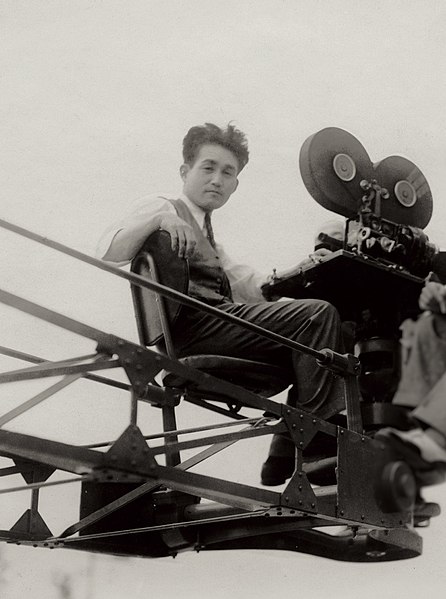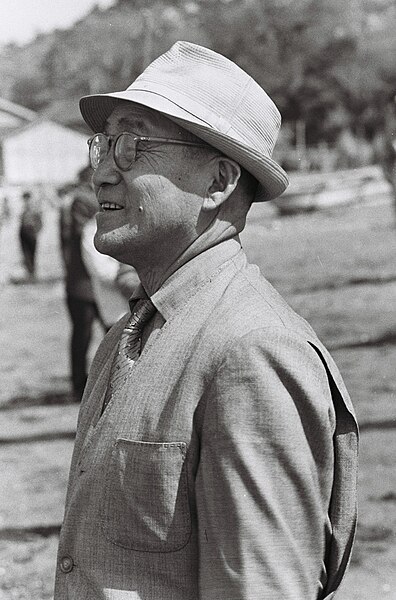In filmmaking and video production, a crane shot is a shot taken by a camera on a moving crane or jib. Filmmaker D. W. Griffith created the first crane for his 1916 epic film Intolerance, with famed special effects pioneer Eiji Tsuburaya later constructing the first iron camera crane which is still adapted worldwide today. Most cranes accommodate both the camera and an operator, but some can be moved by remote control. Crane shots are often found in what are supposed to be emotional or suspenseful scenes. One example of this technique is the shots taken by remote cranes in the car-chase sequence of the 1985 film To Live and Die in L.A. Some filmmakers place the camera on a boom arm simply to make it easier to move around between ordinary set-ups.
Godzilla co-creator Eiji Tsuburaya riding the first iron shooting crane in 1934. An adaptation of this crane is still used worldwide today.
Shooting from a manual crane
Eiji Tsuburaya was a Japanese special effects director, filmmaker, and cinematographer. A co-creator of the Godzilla and Ultraman franchises, he is considered one of the most important and influential figures in the history of cinema. Known as the "Father of Tokusatsu", he pioneered Japan's special effects industry, introducing several technological developments in film productions. In a career spanning five decades, Tsuburaya worked on approximately 250 films—including globally renowned features directed by Ishirō Honda, Hiroshi Inagaki, and Akira Kurosawa—and earned six Japan Technical Awards.
Tsuburaya in 1960
Tsuburaya with his mother Sei, c. 1902. Sei died of illness shortly after giving birth to her second son.
Tsuburaya (far right) with fellow Imperial Japanese Army comrades, c. 1922
Tsuburaya riding his iron shooting crane in 1934. An adaptation of this crane is still used worldwide today.





